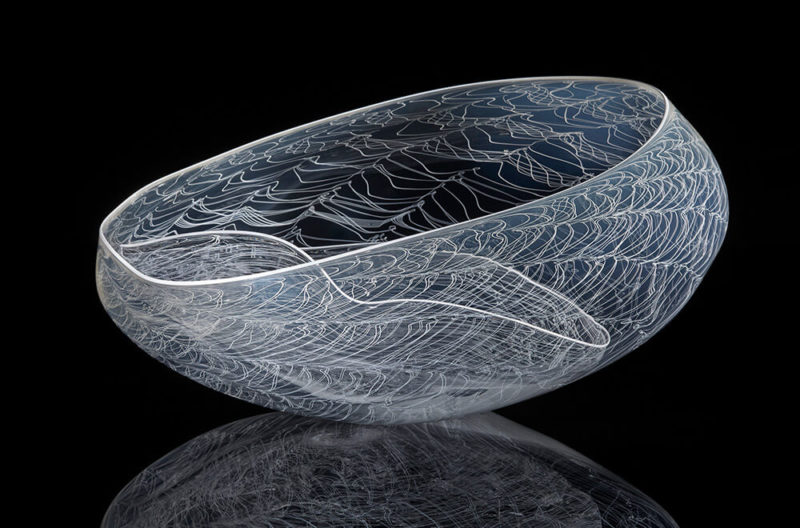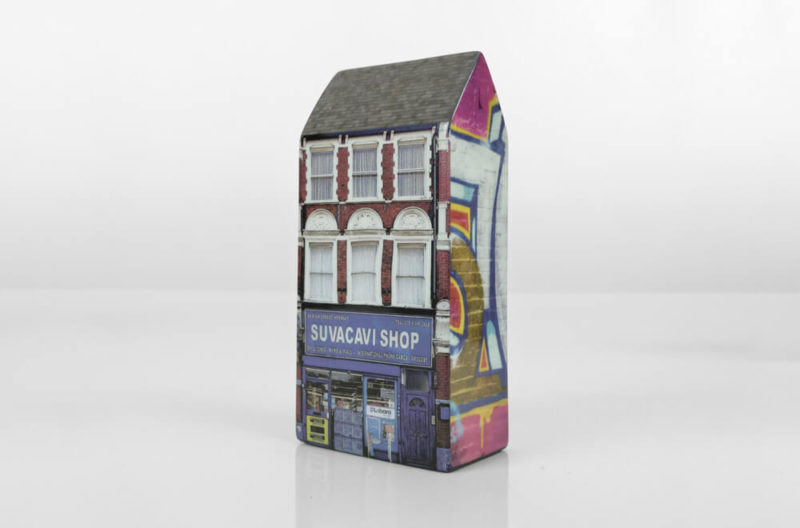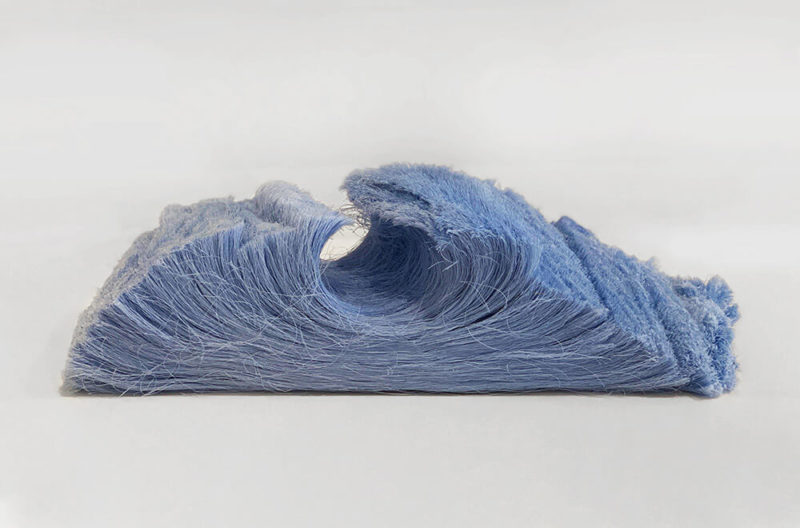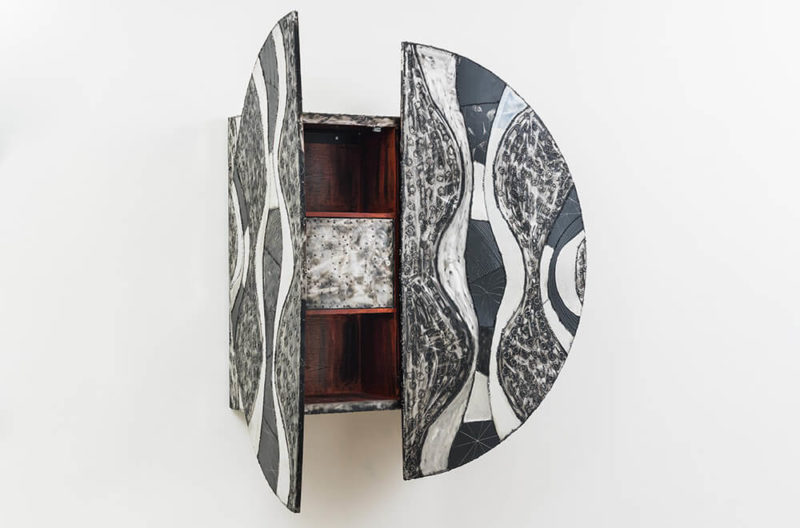‘Gigognes. Olympia. 43 + 38’, 2020
Thomas Lemut
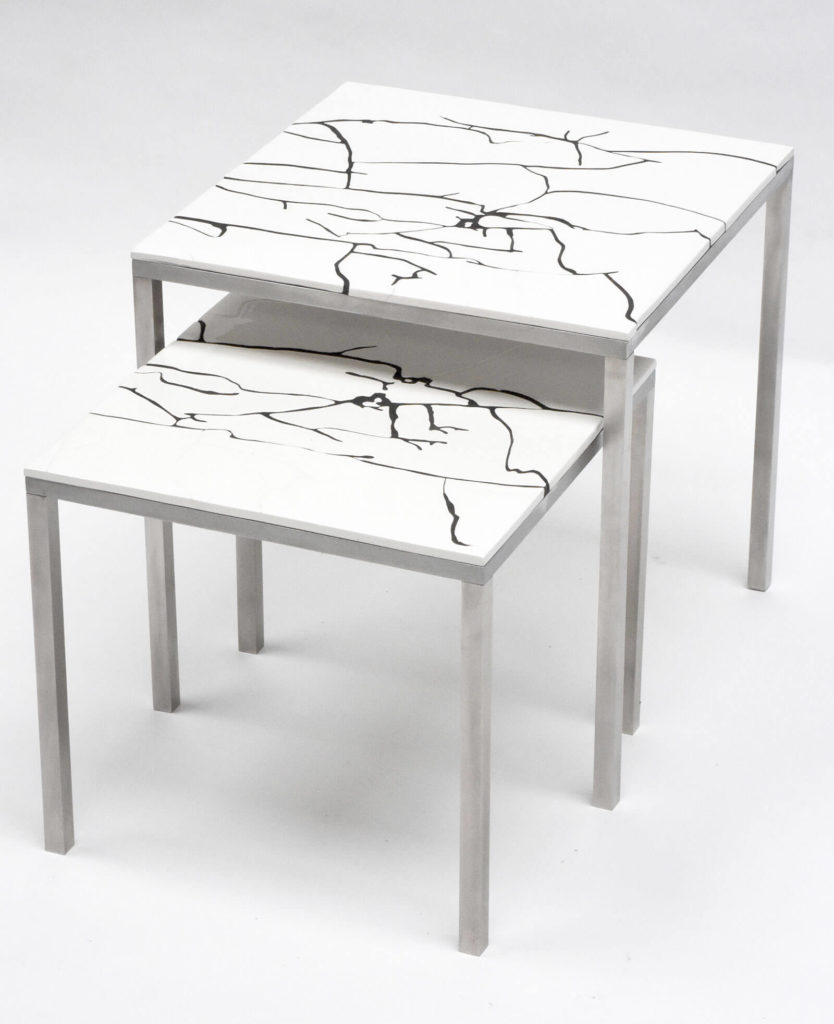
Thomas Lemut, ‘Gigognes. Olympia. 43 + 38’, 2020
COURTESY: Mouvements Modernes / PHOTOGRAPH: Thomas Lemut
EARLIER THIS MONTH, Paris gallery Mouvements Modernes launched their latest collaboration with the sculptor and furniture maker Thomas Lemut. The fruits of 2020 included two lamps, a one-off table whose surface depicts an aerial view of his home village in Burgundy, and this one-off pair of nesting tables (Gigognes), named ‘Olympia’.
Lemut, now based in Paris, was born into a double inheritance. On the one side, his family were soldiers, on the other, foresters. His personality, evident in his work, reflects both the discipline and the precision of the former and the respectful, even passionate, attention to a particular material – whether that is wood, or metal, ceramic or glass – of the latter. Always fundamentally an artist, Lemut’s career has encompassed film production, art direction, sculpture and furniture-making. His furniture is meticulously engineered, with the apparently austere, minimal, linear outlines of the forms offset by a sensual foregrounding of materials. There is always a play of logic against strong emotion.
‘Olympia’ is a case in point. The tables themselves are constructed with steel legs, of one tonality of grey, upholding a tray of colourless anodised aluminium, another shade of grey. Into this mathematical structure is inserted a chaotic puzzle of individual segments of white glazed earthenware, connected by mortar of yet another, now almost black, grey. The crazy zigzagging is not, however, random. The black lines map exactly the cracking of the paint on Édouard Manet’s famous and once scandalous painting of ‘Olympia’, first exhibited in 1865. The tiny section of the painting Lemut has chosen to focus on is over the courtesan’s breast, where the cracks are most apparent. Indeed, one of the nodes of the pattern of craquelure he has reproduced coincides with her painted nipple.
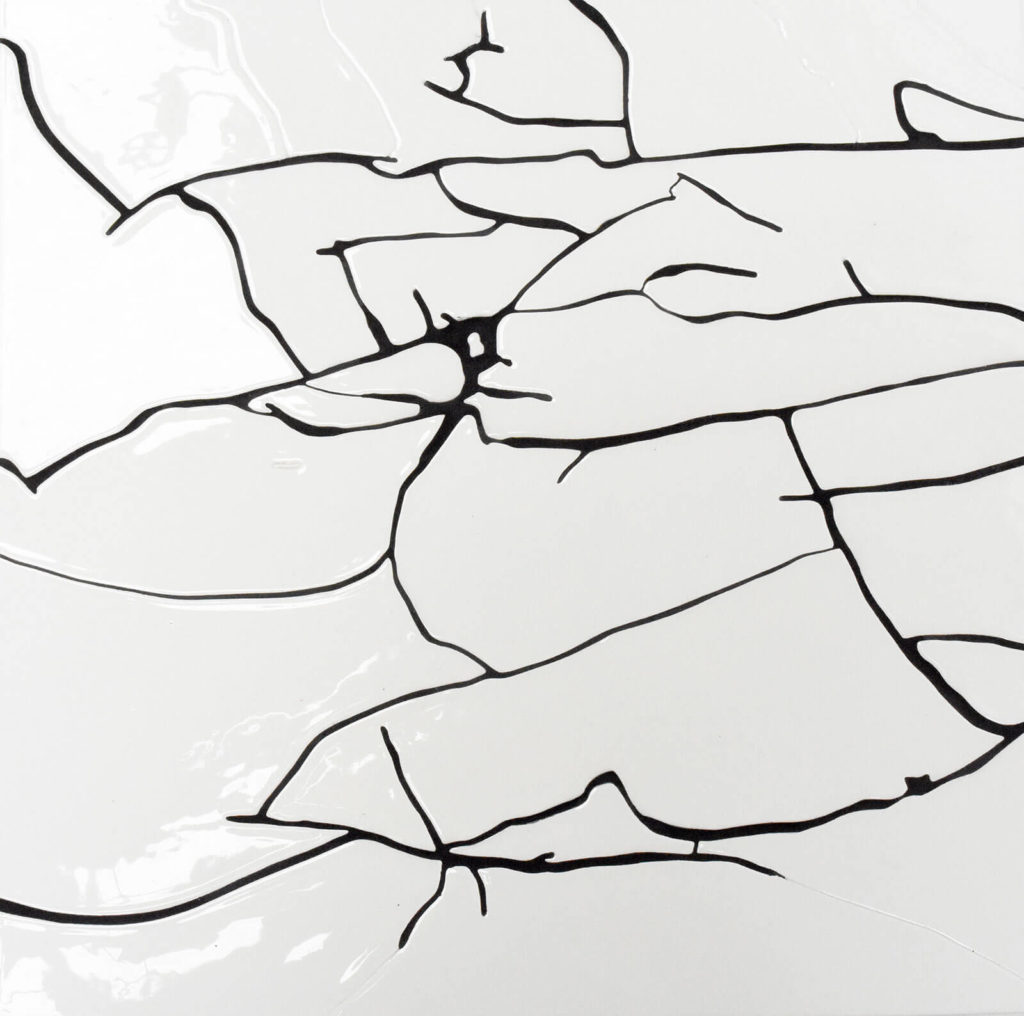
Thomas Lemut, ‘Gigognes. Olympia. 43 + 38’, 2020 (detail)
COURTESY: Mouvements Modernes / PHOTOGRAPH: Thomas Lemut
So here we have what appears to be a cool and elegant table that seethes with ideas. As Lemut says of his painstakingly crafted surface, “It brings a certain poetry.” But more than that, it brings to the apparently immaculate metal table, the frailty of the human. Lemut says, “A painting is like a body, it changes through time – even the paint changes colour.” The cracked paint of Olympia’s breast is a poignant reminder both of human mortality and also of the mortality of art. But rather than railing against time and its damage, Lemut honours its central place in our life, by using here the Japanese technique of Kintsugi, where broken ceramics are mended using lacquer mixed with gold powder. Being Lemut, however, he replaces the gold with dark grey, a muted but still powerful gesture. This homage to imperfection transforms the tables into companions for flawed and actual people – the truly seductive, like Olympia.
Galerie Mouvements Modernes – contemporary design and ceramics, Paris.




